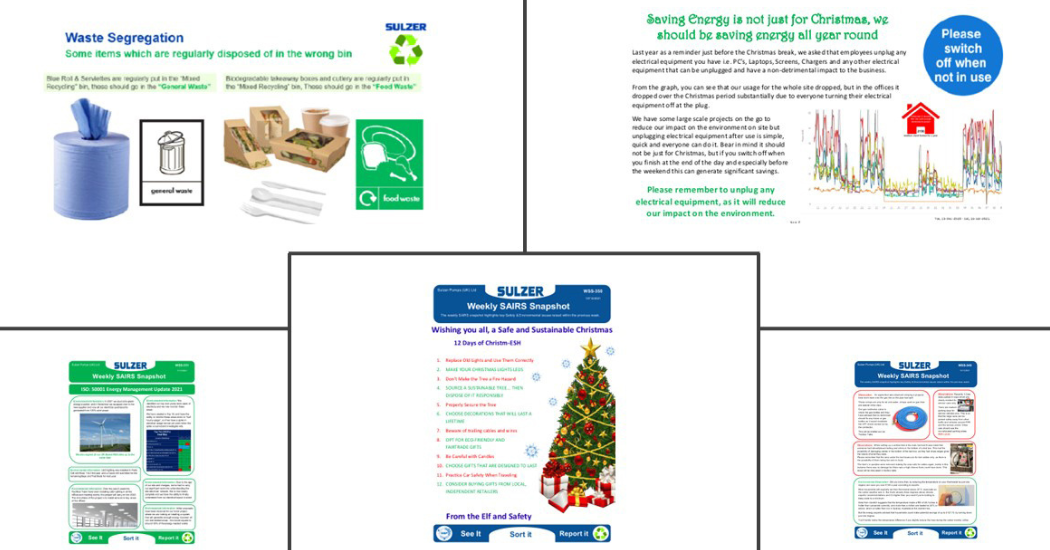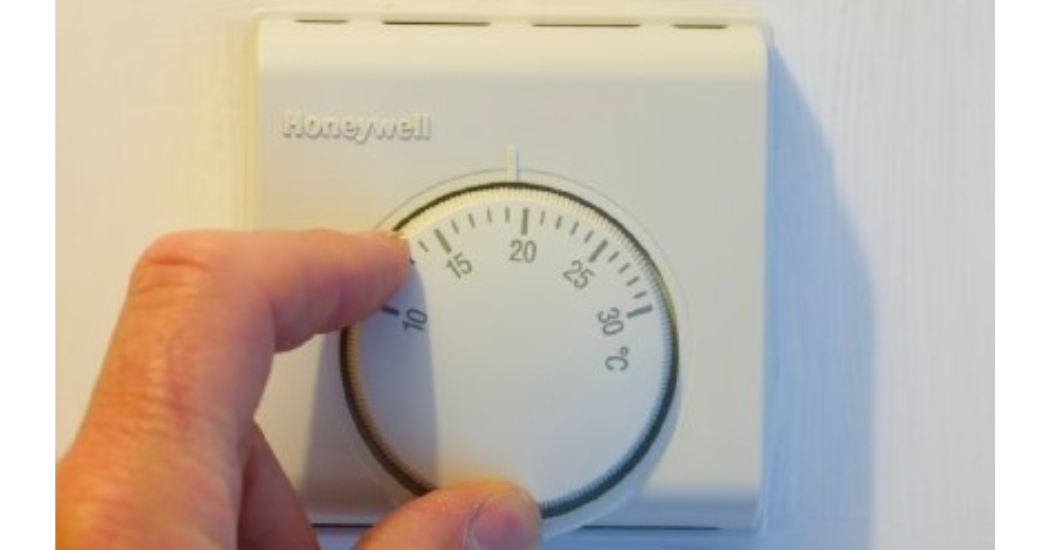Sulzer’s Leeds facility in the UK is a global leader in advanced pump design, 24/7 manufacturing, repair and upgrade services for a wide variety of rotating equipment. Now, the site is taking the lead in another area: decarbonization. By reducing its energy consumption and promoting recycling – the facility is offering a blueprint for how engineering businesses can minimize environmental impact and support customer decarbonization goals.
“Over the past few years, we have accelerated our efforts to reduce emissions and support our customers’ strategies too,” explains Gareth George, ESH Coordinator at Sulzer Pumps UK. “In January 2021, we achieved the ISO 50001 standard for our energy management systems to accompany our ISO 14001 environmental management standard – but we have gone much further in our sustainability strategy.”
Positive energy
Catering to markets such as the water and offshore industries; Sulzer Leeds’ production, service and testing facilities are energy intensive. As a result, the site has moved to a renewable energy supplier while reducing its overall energy demand.
In 2021, the Leeds facility switched to 100% wind power from a green energy supplier for purchased electricity. Subsequently, all other Sulzer sites in the UK have been signed up to the same deal. Taking this initiative to the next level, Leeds is exploring the installation of solar panels, which are projected to provide up to 30% of the total power required on-site.
As well as moving to low carbon power sources, the facility is also reducing energy usage across the board. To complement existing LED lighting, efficient smart LED lighting is being installed throughout the site utilizing features such as daylight harvesting and timed motion sensors to further reduce energy consumption. The adoption of quality battery-operated tooling is being trialed and implemented across the site, which is simultaneously saving energy and reducing the risk of vibration exposure to workers. A highly accurate energy monitoring system is enabling power usage and demand spikes to be identified – delivering usable data on where further improvements can be made. As well as engineered controls to turn off equipment, employees are also encouraged to unplug non-detrimental equipment wherever possible, reducing energy demand from devices on standby.
“We have introduced a culture of environmental improvement,” explains Gareth. “As an example, recently an employee identified that the usual pump specified to supply the cooling water for a pump test procedure was a 470 kW booster pump whereas a 40 kW submersible pump could replace this. Spotting this opportunity has helped us to minimize energy consumption and deliver large scale energy savings.”
Waste not, want not
A lot of time has been devoted to how waste is handled at the Leeds facility. As well as educating employees on how to properly dispose of certain types of waste, the center has introduced a strong recycling and reuse policy.
Waste receptacles have been segregated throughout the facility and labelled for the correct materials. This policy has brought real benefits.
“We have achieved zero waste to landfill, the majority through recycling, biodegradable packaging and waste to energy conversion,” says Gareth. “Recycling and repurposing of wood is also widespread at the site, with pallets and boxes donated to local charities to produce planters or chipped and used to replenish the walkways in Manor Mill Meadow – our on-site environmental wildlife garden.”
“We recycle metal and scrap too. We have facilities on site to part process and segregate metals from other materials which greatly improves recyclability”.
A reuse policy for equipment has also reduced disposal and unnecessary purchasing. If an area within the business no longer requires certain equipment, whether office supplies or tooling; the items are marked as surplus and put to one side for other departments to take and use. For larger and more bespoke items, the word can be passed to the other sites which may require it. As a result, the service life of equipment is greatly extended, and capabilities are shared throughout the national service center network.
“Through our Change Management process, the energy performance of all new equipment must be assessed to ensure we are purchasing the most energy efficient solution for the intended task,” Gareth adds.
“We take the energy requirements and carbon impact of equipment as seriously as the safety and production requirements of the equipment!”

Recycling and repurposing of wood is also widespread at the site, with pallets and boxes donated to local charities
Low carbon future
“We are aware that this is only the beginning of our journey towards sustainability, so we are proactively developing plans for the future through our energy management committee who meet frequently to discuss and implement energy improvements. We will be adding to the electric vehicle (EV) charging points installed in our car park, to support our employees as they move to EVs. We are currently installing high speed roller shutter doors and upgrading insulation throughout the facility to reduce heat loss,” Gareth explains.
“Reducing our carbon footprint is not just important for us, but our suppliers and customers too. We want to share our sustainability journey transparently, so that we can achieve joint environmental goals throughout our supply chain and customer-base.”
“When our customers choose to send their critical rotating equipment to Sulzer, we want them to be assured that we are committed to reducing the carbon footprint of any repair or upgrade that is carried out.”
About Sulzer:
Sulzer is a global leader in fluid engineering. We specialize in pumping, agitation, mixing, separation and application technologies for fluids of all types. Our customers benefit from our commitment to innovation, performance and quality and from our responsive network of 180 world-class production facilities and service centers across the globe. Sulzer has been headquartered in Winterthur, Switzerland, since 1834. In 2021, our 13’800 employees delivered revenues of CHF 3.2 billion. Our shares are traded on the SIX Swiss Exchange (SIX: SUN).




